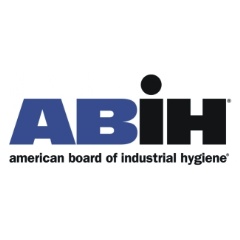New Final Rule to Protect Workers from Beryllium Exposure Takes Effect in March
The American Board of Industrial Hygiene® (ABIH®) reminds workers and industry of the need to address occupational exposure risks to beryllium and other potential hazards.
Occupational exposure to beryllium and beryllium compounds can result in chronic beryllium disease.
On March 21st, all three standards from a new final rule issued by the Occupational Safety and Health Administration (OSHA) to protect workers from exposures associated with beryllium-related diseases will take effect.
OSHA estimates about 62,000 workers are exposed to beryllium in the workplace. The finalized beryllium standards are for general industry, construction and shipyards. The rule is projected to provide net benefits of over $560 million annually. Key provisions of the new rule:
- Reduces the permissible exposure limit (PEL) for beryllium to 0.2 micrograms per cubic meter of air, averaged over 8-hours.
- Establishes a new short term exposure limit for beryllium of 2.0 micrograms per cubic meter of air, over a 15-minute sampling period.
- Requires employers to use engineering and work practice controls (such as ventilation or enclosure) to limit worker exposure to beryllium; provide respirators when controls cannot adequately limit exposure; limit worker access to high-exposure areas; develop a written exposure control plan; and train workers on beryllium hazards.
- Requires employers to make medical exams available to monitor exposed workers and provides medical removal protection benefits to workers identified with a beryllium-related disease.
Industries have one year from the original effective date to comply with most of the requirements. All sectors have two years from the original effective date to provide any required change rooms and showers, and three years from the original effective date to implement engineering controls.
“Occupational exposure to beryllium and beryllium compounds can result in chronic beryllium disease,” said David Roskelley, CIH® and Chair of ABIH®. “Lung cancer has also been associated with exposure. OSHA estimates this new rule will save 94 lives from beryllium-related diseases and prevent 46 new cases of chronic beryllium disease each year once the effects of the rule are fully realized.”
On the frontlines helping to protect workers from exposure risks to beryllium and beryllium compounds are Certified Industrial Hygienists. CIHs are uniquely qualified to address respirable hazards in the workplace and help to keep companies and institutions in regulatory compliance.
To learn more about the American Board of Industrial Hygiene®, Certified Industrial Hygienist® credential or to locate a CIH® to perform industrial hygiene services, please visit www.ABIH.org, email abih@ABIH.org or call (517) 321-2638.
About the American Board of Industrial Hygiene ®
Since 1960, ABIH®, a not-for-profit corporation, has been the world’s largest organization for certifying professionals in the practice of industrial hygiene. ABIH® is the premier credentialing body responsible for ensuring high-quality certification including education, experience, examination, certification maintenance and ethics enforcement. Currently, more than 6800 people in 32 countries are certified to use the CIH® designation.
( Press Release Image: https://photos.webwire.com/prmedia/12710/207997/207997-1.jpg )
WebWireID207997
- Contact Information
- Paul Cochrane
- President
- Cochrane & Associates, LLC
- Contact via E-mail
This news content may be integrated into any legitimate news gathering and publishing effort. Linking is permitted.
News Release Distribution and Press Release Distribution Services Provided by WebWire.
